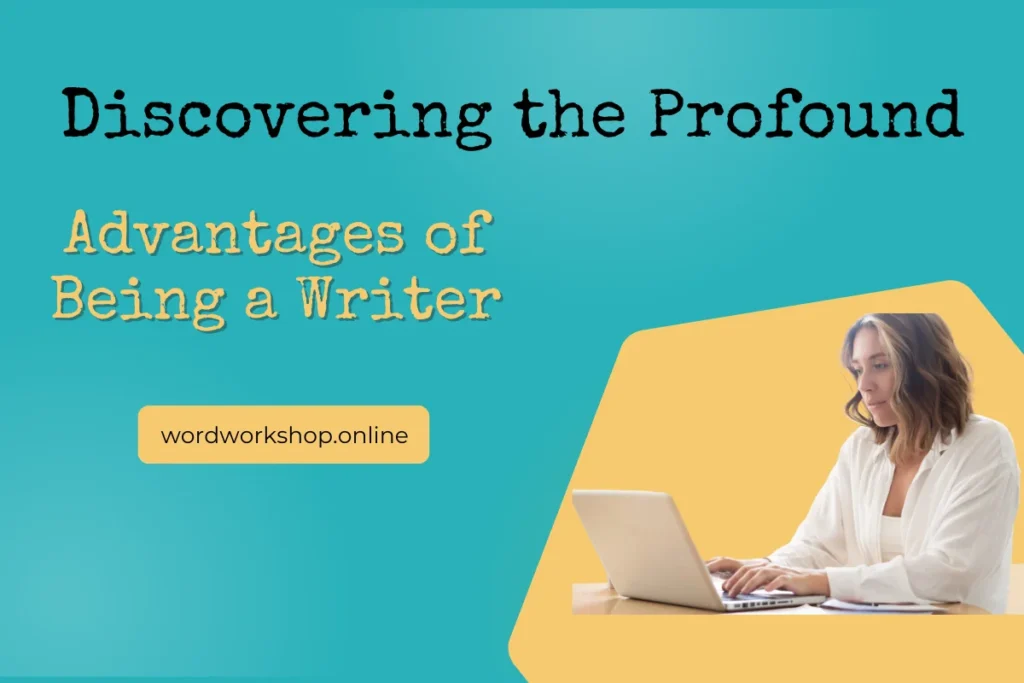In the vast realm of the written word, the journey of a writer often traverses landscapes of creativity, introspection, and meticulous craftsmanship. As one embarks on the path of expressing thoughts and ideas, the importance of effective writing tools becomes evident. These tools are the unsung heroes that accompany writers in their quest to articulate, refine, and bring their visions to life on the blank canvas of a page.
At the heart of the writer’s toolkit is the word processor. A fundamental and indispensable writing tool, it has evolved from the typewriter to the digital age, offering a seamless platform for translating thoughts into text. Widely used word processors such as Microsoft Word, Google Docs, and Scrivener provide essential features like spell-check, formatting options, and collaborative editing, streamlining the writing process.
Moving beyond the basics, the modern writer’s arsenal includes grammar and style-checking tools. Applications like Grammarly have become indispensable companions, offering real-time suggestions for grammar, spelling, and style enhancements. These tools act as vigilant proofreaders, elevating the overall quality of the written piece.
In the age of distraction, maintaining focus is a perpetual challenge for writers. Distraction-free writing tools like FocusWriter and WriteRoom create an immersive environment, eliminating the allure of notifications and other digital interruptions. By fostering a minimalist writing space, these tools empower writers to channel their concentration into the words at hand.
For writers seeking organization and structure, outlining tools are invaluable. Programs like Workflowy and Dynalist allow writers to create hierarchical outlines, breaking down complex ideas into manageable sections. This visual organization aids in maintaining a coherent flow of thoughts, a crucial aspect of effective writing.
The journey of writing is not always a solitary one. Collaboration tools have emerged as essential components, especially in a world where remote collaboration is increasingly prevalent. Google Workspace and Microsoft 365 offer real-time collaboration features, enabling multiple authors to contribute to a document simultaneously. This collaborative approach enhances efficiency and facilitates collective creativity.
Embracing the digital era, note-taking tools have evolved beyond traditional paper and pen. Evernote, OneNote, and Notion are digital notebooks that enable writers to capture ideas, snippets of inspiration, and research findings in an organized manner. These tools serve as reservoirs of creativity, allowing writers to revisit and expand upon their initial musings.
The art of storytelling often involves juggling multiple threads of narrative. Novel-writing software, such as Scrivener and yWriter, provides specialized features for novelists. These tools allow writers to manage characters, plot arcs, and settings seamlessly, providing a holistic view of the narrative landscape.
In the pursuit of clarity and conciseness, editing tools like Hemingway Editor come to the forefront. These tools analyze written content, highlighting complex sentences, passive voice, and overuse of adverbs. By simplifying language and enhancing readability, these editing tools contribute to the overall effectiveness of the written piece.
In the intricate dance of words, thesauruses and dictionaries remain steadfast companions. Online versions such as Thesaurus.com and Merriam-Webster’s website offer a vast array of synonyms, antonyms, and definitions at the writer’s fingertips. These linguistic resources empower writers to choose the most precise and impactful words for their expressions.
Transitioning to the realm of screenwriting, specialized tools like Final Draft and Celtx cater to the unique requirements of scriptwriters. These applications provide templates, formatting guidelines, and collaboration features specifically tailored to the intricacies of scriptwriting.
As the written word extends its reach to the digital realm, blogging tools become essential for those seeking to share their thoughts with a global audience. Platforms like WordPress and Medium offer user-friendly interfaces, allowing writers to create and publish content seamlessly. These tools democratize the act of publishing, enabling individuals to amplify their voices on the virtual stage.
Research is the bedrock of many writing endeavors, and research tools have undergone a digital transformation. Zotero, Mendeley, and EndNote facilitate citation management and organize research materials efficiently. These tools streamline the often arduous process of compiling and citing sources in academic and non-fiction writing.
The evolving landscape of writing tools also includes AI-driven innovations. Text prediction tools like OpenAI’s GPT-3 suggest entire sentences based on a few initial words, enhancing writing efficiency. These AI companions are increasingly integrated into writing platforms, offering predictive text suggestions that align with the writer’s unique voice.
For writers who revel in the tactile experience of pen and paper, the digital age has not overlooked the charm of handwritten notes. Tablets equipped with styluses, such as the Apple iPad and Microsoft Surface, coupled with note-taking apps like Notability and GoodNotes, provide a seamless bridge between the analog and digital realms.
In the dynamic world of social media, scheduling and planning tools have become essential for writers aiming to maintain an online presence. Platforms like Hootsuite and Buffer allow writers to schedule posts, track engagement, and manage multiple social media accounts efficiently. These tools empower writers to engage with their audience strategically.
The writing journey is not always a linear progression from inception to completion. Revision and rewriting are integral components, and version control tools become invaluable in managing the evolution of a written piece. Versioning platforms like GitHub and Bitbucket, although rooted in software development, find application in collaborative writing projects.
As writers navigate the diverse landscapes of genres, style guides stand as signposts, providing guidance on language usage, citation formats, and stylistic conventions. Manuals such as The Chicago Manual of Style, the Associated Press (AP) Stylebook, and the Modern Language Association (MLA) Handbook are revered companions for writers seeking to adhere to established standards.
In the pursuit of continuous improvement, feedback tools emerge as catalysts for growth. Platforms like Scribophile and Critique Circle facilitate peer review, enabling writers to receive constructive feedback from a community of like-minded individuals. This collaborative approach contributes to honing the craft of writing.
The allure of visual storytelling finds expression in graphic design tools for writers venturing into content creation. Canva and Adobe Spark provide user-friendly interfaces for designing book covers, promotional graphics, and social media visuals. These tools empower writers to visually represent their narratives to a broader audience.
In the realm of academia and non-fiction, citation management tools such as Zotero and EndNote streamline the often intricate process of citing sources. These tools organize references, generate citations, and ensure adherence to specific citation styles, simplifying the task of maintaining scholarly rigor.
In the kaleidoscopic array of writing tools, time management tools stand as guardians of productivity. Applications like Trello, Asana, and Todoist assist writers in organizing tasks, setting deadlines, and managing project timelines. These tools bring structure to the often fluid and iterative nature of the writing process.
The writing journey is a testament to the symbiotic relationship between the writer and their tools. From the simplicity of a blank page to the intricacies of collaborative platforms and AI-driven innovations, these tools serve as companions, amplifying the writer’s voice and enhancing the creative process. As the landscape of writing tools continues to evolve, writers find themselves equipped with an ever-expanding arsenal, ready to embark on new literary adventures and bring their narratives to life in the digital age.



